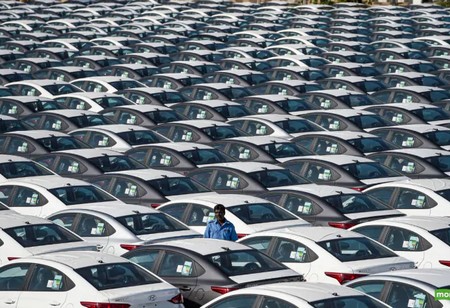
Government Expected to Set High Bar for Auto Cos To Secure PLI Sops


CEOInsights Team, 0
According to the info, the qualifying parameters for Indian automobile makers will include minimum annual exports of Rs. 1,000 crore at the parent company level. Multinational corporations will have to show an annual global revenue of Rs. 10,000 crore in addition to the exports criterion for their local units to avail of the subsidies. Moreover, the vehicles and components exported should have around 80 percent locally sourced parts and materials to satisfy the exports criterion, stated one of the person cited above.
The stringent rules to access the government’s output-based subsidy are designed to weed out small companies but are unlikely to pose a challenge to the country’s biggest automakers such as Maruti Suzuki India Ltd and Hyundai Motor India Ltd. “It is possible that the ministry of heavy industries may revise the eligibility norms, making them more stringent when the norms are
It is possible that the ministry of heavy industries may revise the eligibility norms, making them more stringent when the norms are finally notified
finally notified,” said the person who is aware of the development. The ministry has been tasked with drawing up the contours of the eligibility criteria for companies in the automotive sector.
The automotive sector, including vehicle makers and parts suppliers, will receive the biggest chunk of the subsidies at Rs. 57,000 crore. The export-related revenue and localization of production are the two primary criteria on which the government will choose the beneficiaries, one of the two people said. “The government wants to ensure that the big and relevant ones get the subsidy,” the person said.
The Indian government has been for some time urging automakers in the domestic market to cut imports of components, especially from China, and increase exports of vehicles. The idea is to promote India as an alternative manufacturing hub for global companies seeking to diversify their exposure to China amid the country’s trade tensions with the US. India’s simmering border dispute with China has also prompted the Modi government to put curbs on component imports from the country.
“The localization norms will be there since the idea of this scheme is to promote manufacturing, and subsequently exports of products, mostly made in India with locally sourced components and materials. This scheme is being devised carefully, and a high local content is likely to be one of the conditions,” one of the person said. Auto manufacturers such as Hyundai, Maruti, Bajaj Auto Ltd and TVS Motor Co. export sizable numbers of cars and two-wheelers every year. Most of the parameters being considered are still tentative in nature, and discussions on the final set of rules are still going on.